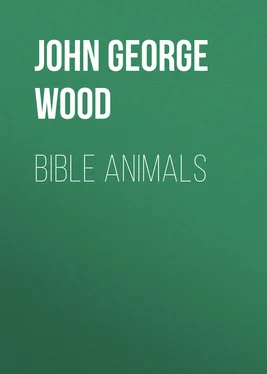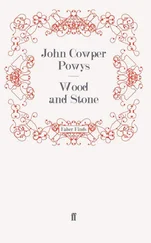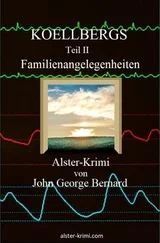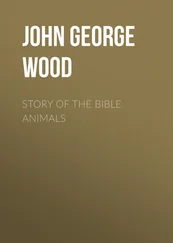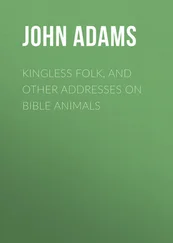John George Wood - Bible Animals
Здесь есть возможность читать онлайн «John George Wood - Bible Animals» — ознакомительный отрывок электронной книги совершенно бесплатно, а после прочтения отрывка купить полную версию. В некоторых случаях можно слушать аудио, скачать через торрент в формате fb2 и присутствует краткое содержание. Жанр: foreign_prose, foreign_religion, Философия, foreign_psychology, foreign_antique, на английском языке. Описание произведения, (предисловие) а так же отзывы посетителей доступны на портале библиотеки ЛибКат.
- Название:Bible Animals
- Автор:
- Жанр:
- Год:неизвестен
- ISBN:нет данных
- Рейтинг книги:3 / 5. Голосов: 1
-
Избранное:Добавить в избранное
- Отзывы:
-
Ваша оценка:
- 60
- 1
- 2
- 3
- 4
- 5
Bible Animals: краткое содержание, описание и аннотация
Предлагаем к чтению аннотацию, описание, краткое содержание или предисловие (зависит от того, что написал сам автор книги «Bible Animals»). Если вы не нашли необходимую информацию о книге — напишите в комментариях, мы постараемся отыскать её.
Bible Animals — читать онлайн ознакомительный отрывок
Ниже представлен текст книги, разбитый по страницам. Система сохранения места последней прочитанной страницы, позволяет с удобством читать онлайн бесплатно книгу «Bible Animals», без необходимости каждый раз заново искать на чём Вы остановились. Поставьте закладку, и сможете в любой момент перейти на страницу, на которой закончили чтение.
Интервал:
Закладка:
Then there is the word Shor, or Tor, to signify a single head of cattle, of any age, or of either sex. The second form of this word is familiar to us in the Latin word "taurus," and the English "steer." There are several other words, such as Par, a young bull, and Parah, a heifer, which do not need explanation.
Another species of the ox-tribe now inhabits Palestine, though commentators rather doubt whether it is not a comparatively late importation. This is the true Buffalo ( Bubalus buffelus , Gray), which is spread over a very large portion of the earth, and is very plentiful in India. In that country there are two distinct breeds of the Buffalo, namely, the Arnee, a wild variety, and the Bhainsa, a tamed variety. The former animal is much larger than the latter, being sometimes more than ten feet in length from the nose to the root of the tail, and measuring between six and seven feet in height at the shoulder. Its horns are of enormous length, the tail is very short, and tufts of hair grow on the forehead and horns. The tamed variety is at least one-third smaller, and, unlike the Arnee, never seems to get into high condition. It is an ugly, ungainly kind of beast, and is rendered very unprepossessing to the eye by the bald patches which are mostly found upon its hide.
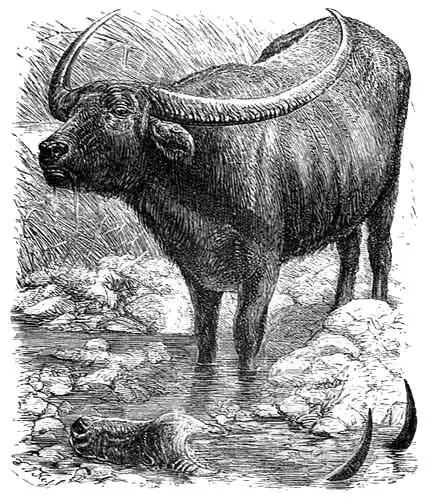
THE BUFFALO.
Being a water-loving animal, the Buffalo always inhabits the low-lying districts, and is fond of wallowing in the oozy marshes in which it remains for hours, submerged all but its head, and tranquilly chewing the cud while enjoying its mud-bath. While thus engaged the animal depresses its horns so that they are scarcely visible, barely allowing more than its eyes, ears, and nostrils to remain above the surface, so that the motionless heads are scarcely distinguishable from the grass and reed tufts which stud the marshes. Nothing is more startling to an inexperienced traveller than to pass by a silent and tranquil pool where the muddy surface is unbroken except by a number of black lumps and rushy tufts, and then to see these tufts suddenly transformed into twenty or thirty huge beasts rising out of the still water as if by magic. Generally, the disturber of their peace had better make the best of his way out of their reach, as the Buffalo, whether wild or tame, is of a tetchy and irritable nature, and resents being startled out of its state of dreamy repose.
In the Jordan valley the Buffalo is found, and is used for agriculture, being of the Bhainsa, or domesticated variety. Being much larger and stronger than the ordinary cattle, it is useful in drawing the plough, but its temper is too uncertain to render it a pleasant animal to manage. As is the case with all half-wild cattle, its milk is very scanty, but compensates by the richness of the quality for the lack of quantity.
THE WILD BULL
The Tô, Wild Bull of the Old Testament—Passages in which it is mentioned—The Wild Bull in the net—Hunting with nets in the East—The Oryx supposed to be the Tô of Scripture—Description of the Oryx, its locality, appearance, and habits—The points in which the Oryx agrees with the Tô—The "snare" in which the foot is taken, as distinguished from the net.
In two passages of the Old Testament an animal is mentioned, respecting which the translators and commentators have been somewhat perplexed, in one passage being translated as the "Wild Ox," and in the other as the "Wild Bull." In the Jewish Bible the same rendering is preserved, but the sign of doubt is added to the word in both cases, showing that the translation is an uncertain one.
The first of these passages occurs in Deut. xiv. 5, where it is classed together with the ox, sheep, goats, and other ruminants, as one of the beasts which were lawful for food. Now, although we cannot identify it by this passage, we can at all events ascertain two important points—the first, that it was a true ruminant, and the second, that it was not the ox, the sheep, or the goat. It was, therefore, some wild ruminant, and we now have to ask how we are to find out the species.
If we turn to Isa. li. 20, we shall find a passage which will help us considerably. Addressing Jerusalem, the prophet uses these words, "By whom shall I comfort thee? Thy sons have fainted, they lie at the head of all the streets, as a wild bull in a net; they are full of the fury of the Lord, the rebuke of thy God." We now see that the Tô or Teô must be an animal which is captured by means of nets, and therefore must inhabit spots wherein the toils can be used. Moreover, it is evidently a powerful animal, or the force of the simile would be lost. The prophet evidently refers to some large and strong beast which has been entangled in the hunter's nets, and which lies helplessly struggling in them. We are, therefore, almost perforce driven to recognise it as some large antelope.
The expression used by the prophet is so characteristic that it needs a short explanation. In this country, and at the present day, the use of the net is almost entirely restricted to fishing and bird-catching; but in the East nets are still employed in the capture of very large game.
A brief allusion to the hunting-net is made at page 27, but, as the passage in Isaiah li. requires a more detailed account of this mode of catching large animals, it will be as well to describe the sport as at present practised in the East.
When a king or some wealthy man determines to hunt game without taking much trouble himself, he gives orders to his men to prepare their nets, which vary in size or strength according to the particular animal for which they are intended. If, for example, only the wild boar and similar animals are to be hunted, the nets need not be of very great width; but for agile creatures, such as the antelope, they must be exceedingly wide, or the intended prey will leap over them. As the net is much used in India for the purpose of catching game, Captain Williamson's description of it will explain many of the passages of Scripture wherein it is mentioned.
The material of the net is hemp, twisted loosely into a kind of rope, and the mode in which it is formed is rather peculiar. The meshes are not knotted together, but only twisted round each other, much after the fashion of the South American hammocks, so as to obtain considerable elasticity, and to prevent a powerful animal from snapping the cord in its struggles. Some of these nets are thirteen feet or more in width, and even such a net as this has been overleaped by a herd of antelopes. Their length is variable, but, as they can be joined in any number when set end to end, the length is not so important as the width.
The mode of setting the nets is singularly ingenious. When a suitable spot has been selected, the first care of the hunters is to stretch a rope as tightly as possible along the ground. For this purpose stout wooden stakes or truncheons are sunk crosswise in the earth, and between these the rope is carefully strained. The favourite locality of the net is a ravine, through which the animals can be driven so as to run against the net in their efforts to escape, and across the ravine a whole row of these stakes is sunk. The net is now brought to the spot, and its lower edge fastened strongly to the ground rope.
The strength of this mode of fastening is astonishing, and, although the stakes are buried scarcely a foot below the surface, they cannot be torn up by any force which can be applied to them; and, however strong the rope may be, it would be broken before the stakes could be dragged out of the ground.
A smaller rope is now attached to the upper edge of the net, which is raised upon a series of slight poles. It is not stretched quite tightly, but droops between each pair of poles, so that a net which is some thirteen feet in width will only give nine or ten feet of clear height when the upper edge is supported on the poles. These latter are not fixed in the ground, but merely held in their places by the weight of the net resting upon them.
Читать дальшеИнтервал:
Закладка:
Похожие книги на «Bible Animals»
Представляем Вашему вниманию похожие книги на «Bible Animals» списком для выбора. Мы отобрали схожую по названию и смыслу литературу в надежде предоставить читателям больше вариантов отыскать новые, интересные, ещё непрочитанные произведения.
Обсуждение, отзывы о книге «Bible Animals» и просто собственные мнения читателей. Оставьте ваши комментарии, напишите, что Вы думаете о произведении, его смысле или главных героях. Укажите что конкретно понравилось, а что нет, и почему Вы так считаете.
